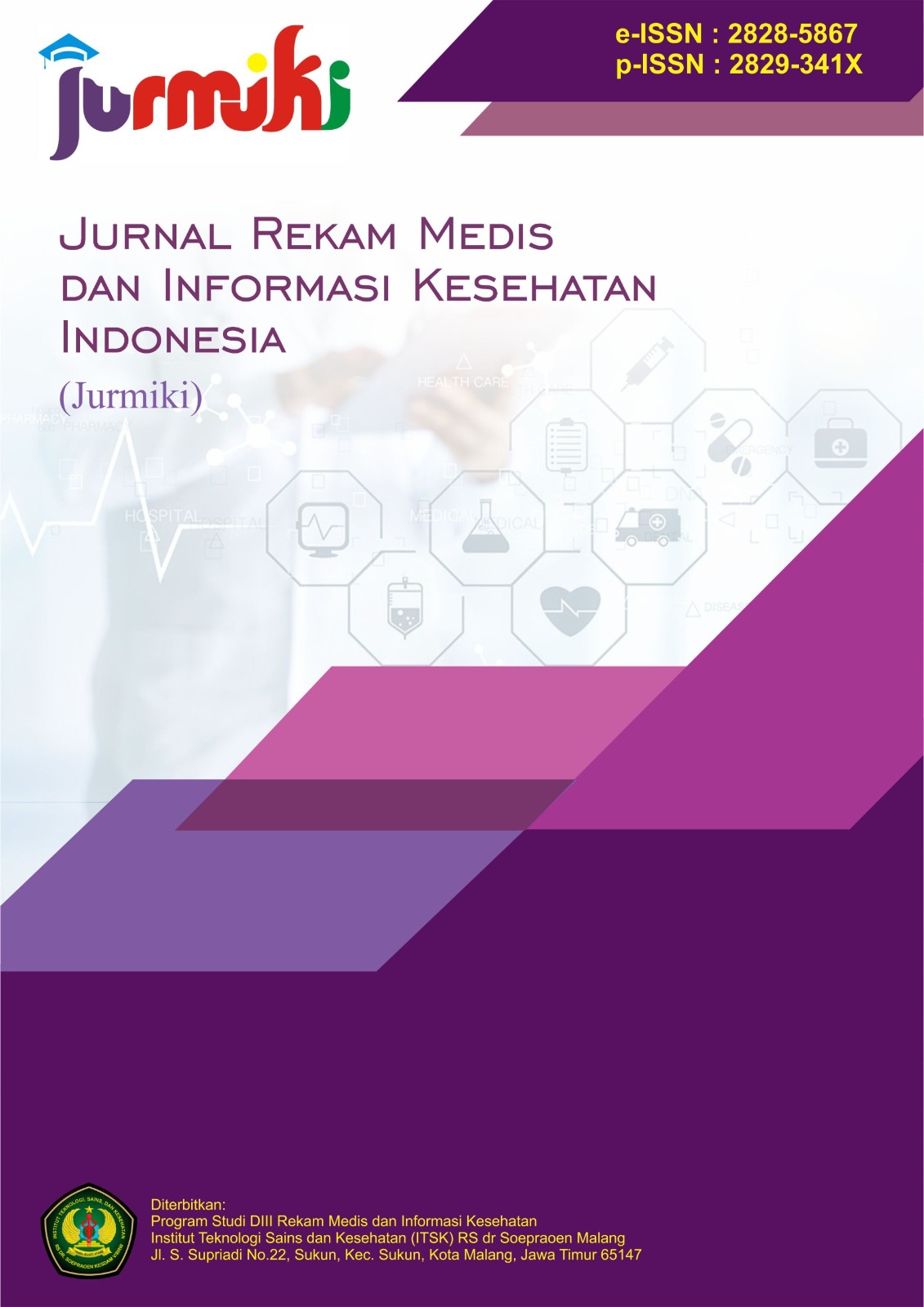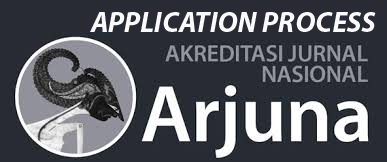Review of the Preparation for the Implementation of Electronic Signatures for the Authentication of Medical Records Based on a Fishbone Diagram at the Ngebel Community Health Center
DOI:
https://doi.org/10.62951/jurmiki.v4i1.90Keywords:
Community Health Center, Electronic Signature, Fishbone Diagram, Implementation, Medical RecordsAbstract
Background: The application of electronic signatures (TTE) is an essential step in supporting digitalization efforts to authenticate medical record documents (RME) in a secure and efficient manner. This study aims to review the readiness for TTE implementation at Puskesmas Ngebel using the Fishbone Diagram analysis (5M: Man, Method, Material, Machine, Money). Subjects and Methods: This research uses a qualitative method with data collection conducted through interviews with respondents including the Head of Puskesmas (for triangulation), medical record officers, registration staff, doctors, and nurses. Research Results: The results show that Puskesmas Ngebel is still in the initial stage of implementation and faces various obstacles as identified through the Fishbone Diagram analysis. This study is expected to review the level of readiness for TTE implementation and offer solutions to overcome the identified challenges. By applying the Fishbone Diagram approach, this research successfully identifies institutional barriers in preparing for the implementation of electronic signatures for authenticating medical record documents. The findings are expected to contribute to strategic planning for digitalization in community health centers.
References
Aini, R. N., Rosiandini, R., Angelica, P., & Kusumadewi, A. F. (2022). Legalitas tanda tangan elektronik pada rekam medis di RS PKU Muhammadiyah Gamping. Jurnal Manajemen Informasi Kesehatan Indonesia, 10(1), 9–13. https://doi.org/10.33560/jmiki.v12i1.536
Arifin, M. (2020). Manajemen rekam medis dan informasi kesehatan. Nuha Medika.
Departemen Kesehatan Republik Indonesia. (2006). Pedoman rekam medis. Departemen Kesehatan Republik Indonesia.
Departemen Kesehatan Republik Indonesia. (2008). Peraturan Menteri Kesehatan Republik Indonesia Nomor 269/Menkes/Per/III/2008 tentang rekam medis. Depkes RI.
Departemen Kesehatan Republik Indonesia. (2009). Profil kesehatan Indonesia. Departemen Kesehatan Republik Indonesia.
Asih, H. A., & Indrayadi. (2023). Perkembangan rekam medis elektronik di Indonesia: Literature review. Jurnal Promotif Preventif, 6(2), 183–190.
Harefa, F., Dachi, R. A., Brahmana, N. E., Ketaren, O., & Manurung, K. (2021). [Artikel dalam Journal of Healthcare Technology and Medicine]. Journal of Healthcare Technology and Medicine, 7(2), 1024–1038.
Hikmah, J. (2020). Paradigm. Computer Graphics Forum, 39(1), 672–673. https://doi.org/10.1111/cgf.13898
Ikawati, F. R. (2024). Efektivitas penggunaan rekam medis elektronik terhadap peningkatan kualitas pelayanan pasien di rumah sakit. Ranah Research: Journal of Multidisciplinary Research and Development, 6(3), 282–292. https://doi.org/10.38035/rrj.v6i3.819
Ishikawa, K. (1985). What is total quality control? The Japanese way. Prentice-Hall.
Kadir, R., Ismail, Z., & Selamat, M. H. (2015). Digital signature: An overview and its future application. Journal of Theoretical and Applied Information Technology, 78(3), 467–475.
Kementerian Kesehatan Republik Indonesia. (2022). Transformasi digital layanan kesehatan: Strategi dan implementasi di puskesmas. Kemenkes RI.
Khairina, M. D. (2011). Analisis keamanan sistem login. Jurnal Informatika Mulawarman, 6(2), 64–67.
Notoatmodjo, S. (2010). Metodologi penelitian kesehatan. Rineka Cipta.
Pelajaran.co.id. (n.d.). Pengertian rekam medis, tujuan, manfaat, kegunaan, jenis dan isi rekam medis menurut para ahli lengkap. Pelajaran.co.id. https://www.pelajaran.co.id/pengertian-rekam-medis-tujuan-manfaat-kegunaan-jenis-dan-isi-rekam-medis-menurut-para-ahli/#Huffman_1999
Permenkes Republik Indonesia. (2022). Peraturan Menteri Kesehatan Nomor 24 Tahun 2022 tentang rekam medis. Direktorat Jenderal Pelayanan Medik.
Rahayu, S. (2021). Peran kompetensi SDM dalam implementasi sistem tanda tangan elektronik pada rekam medis elektronik. Jurnal Informasi Kesehatan Indonesia, 9(2), 112–120.
Republik Indonesia. (2008). Undang-Undang Nomor 11 Tahun 2008 tentang Informasi dan Transaksi Elektronik. https://peraturan.bpk.go.id/Home/Details/37589/uu-no-11-tahun-2008
Sahir, L., & Wijayanti, R. A. (2022). Faktor penyebab pending claim ranap JKN dengan fishbone diagram di RSUP Dr. Kariadi. Jurnal Manajemen Informasi Kesehatan Indonesia, 10(2), 190–197. https://doi.org/10.33560/jmiki.v10i2.480
Seputar Kita. (2024, September). Fishbone diagram: Pengertian, fungsi, dan cara membuatnya. Seputar Kita. Diakses 11 Desember 2024, dari https://www.seputarkita.id/2024/09/fishbone-diagram-pengertian-fungsi-dan-cara-membuatnya.html
Setiawan, R., & Rahayu, S. (2021). Analisis infrastruktur teknologi informasi dalam implementasi sistem informasi kesehatan di wilayah perdesaan. Jurnal Teknologi dan Informasi Kesehatan, 9(1), 88–95.
Sugiyono. (2013). Metode penelitian pendidikan: Pendekatan kuantitatif, kualitatif, dan R&D. Alfabeta.
Suhendra, D., & Wicaksono, A. (2021). Analisis kendala pembiayaan dalam implementasi teknologi informasi kesehatan di puskesmas. Jurnal Kebijakan dan Manajemen Kesehatan, 9(1), 56–65.
Undang-Undang Nomor 19 Tahun 2016 tentang Perubahan atas Undang-Undang Nomor 11 Tahun 2008 tentang Informasi dan Transaksi Elektronik. (2016). Lembaran Negara Republik Indonesia Tahun 2016 Nomor 251.
Downloads
Published
Issue
Section
License
Copyright (c) 2024 Jurnal Rekam Medis dan Informasi Kesehatan Indonesia

This work is licensed under a Creative Commons Attribution-ShareAlike 4.0 International License.








